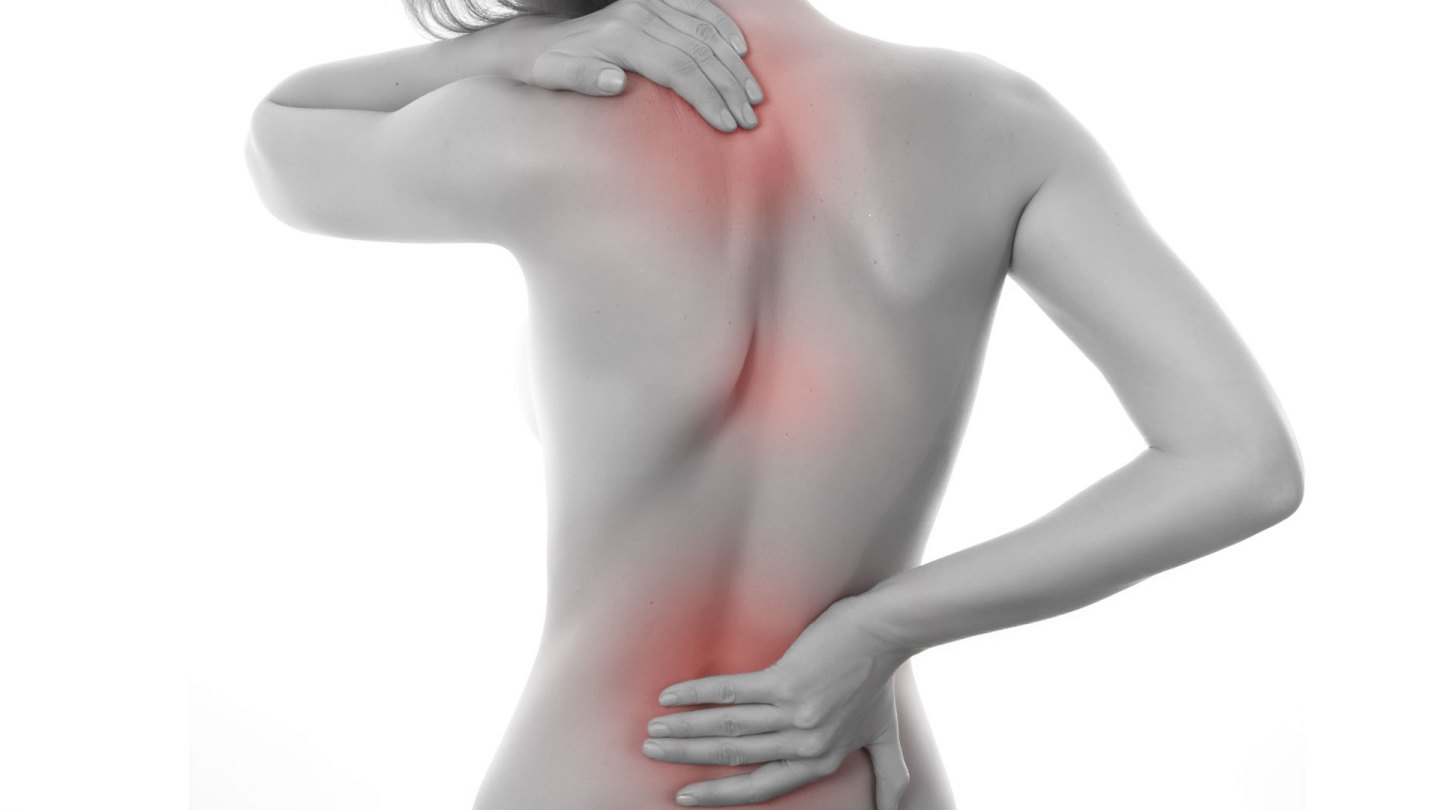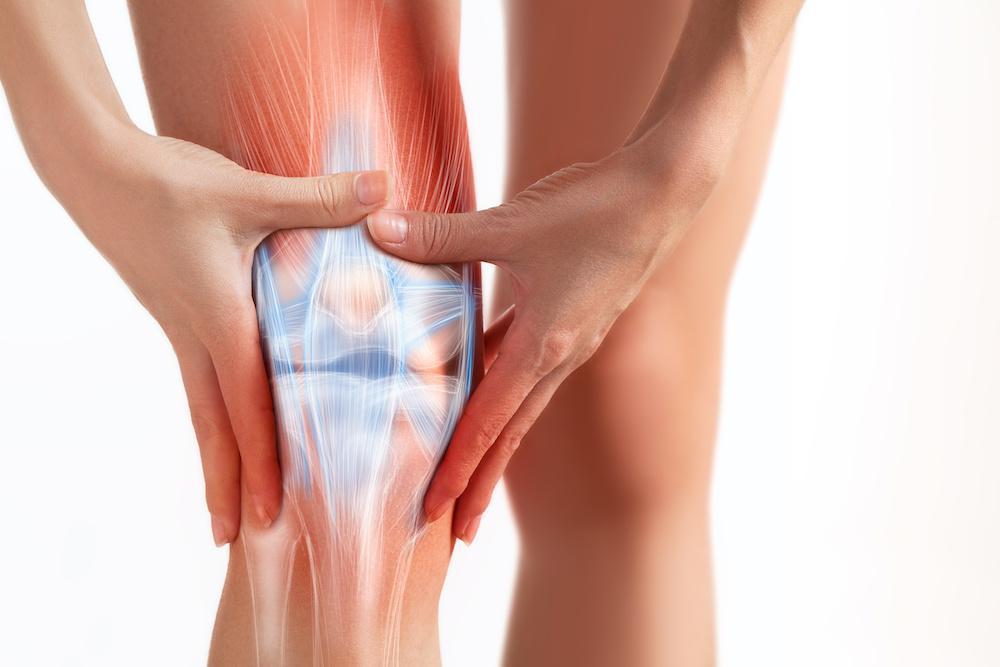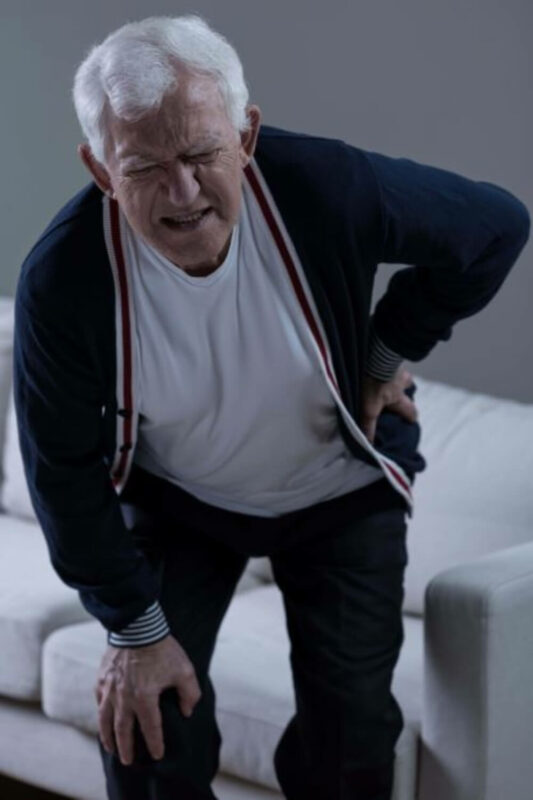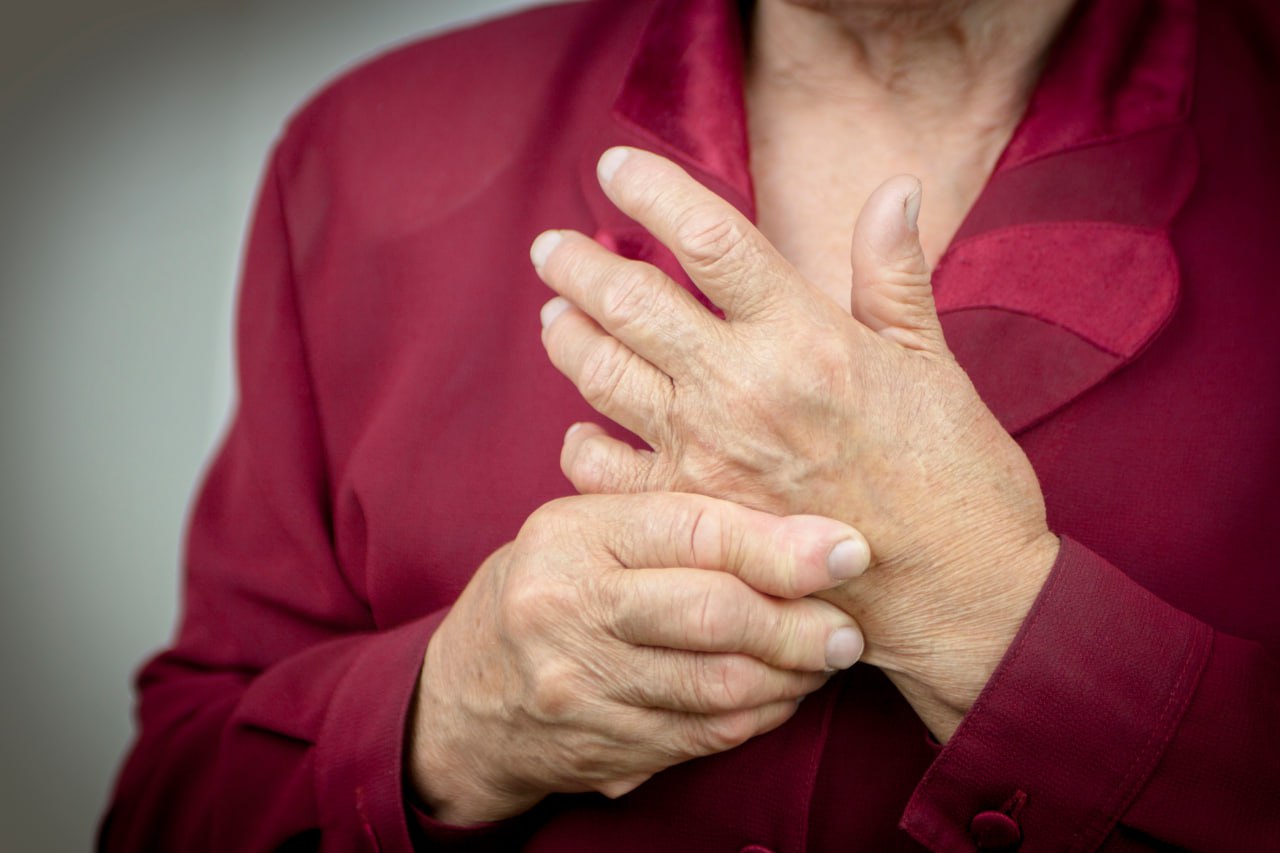Any physical limitation can be frustrating and lead to decreased quality of life. For example, stiffness and a limited range of motion in joints can sometimes make it difficult to undertake everyday activities, such as walking, running, and even sitting.
Although it’s normal for people to experience some level of stiffness or reduced range of motion as they age, it may be a sign of an underlying health condition if the issue persists or is causing significant discomfort. When the range of motion of a joint is affected, understanding the potential causes and available treatment options is vital to restore mobility and reduce joint pain.
Symptoms That Might Accompany Limited Joint Mobility
If you’re feeling stiffness or a limited range of motion, you should pay attention to any other symptoms you might be having. Identifying other signs can help your doctor correctly diagnose your condition so they can create an effective treatment plan. Common symptoms that accompany limited joint mobility may include:
- Joint Pain: Pain associated with the joint can range from mild to severe. It may be localized to the area or radiate throughout the body. If you’re experiencing joint pain in addition to limited mobility, it could be the result of an underlying health condition, such as bursitis or arthritis.
- Swelling: Swelling around the joints can occur if there’s an underlying injury or condition that’s causing inflammation, such as gout or tendinitis.
- Warmth And Redness: If the joint is red, warm to the touch, and/or tender, this could be a sign of infection or inflammation.
- Weakness: Weakness or instability in the joint could indicate a nerve issue or an underlying condition, such as fibromyalgia or rheumatoid arthritis.
- Clicking and Grinding Sensation: A clicking and grinding sensation could mean that the cartilage in your joints is starting to wear down, which can be a sign of osteoarthritis.
- Fatigue: Although fatigue is not always directly related to limited joint mobility, it can be a sign of an underlying condition, such as lupus, that’s causing the restriction.
- Numbness Or Tingling: If you’re experiencing numbness or tingling in your joints, it could indicate an underlying nerve issue.
Common Causes Of Stiffness And A Decreased Range Of Motion
There are many possible causes of limited joint mobility. Some of the most common include:
- Inflammation: Inflammation occurs when the body releases chemicals to stimulate healing in areas that have been injured or infected. It’s characterized by swelling, redness, heat, and pain in the area. Inflammation can cause a limited range of motion and stiffness due to increased pressure on the joint.
- Muscle Stiffness: Muscle stiffness and tightness can occur due to various factors. For instance, stiffness can occur when the muscles are overworked or become tight due to disuse or inactivity. It can also be the cause of an underlying medical issue, such as fibromyalgia.
- Joint Dislocation: Dislocation occurs when the bones of a joint move out of their normal position. This can cause significant pain and stiffness in the affected area. Joint dislocation is most likely to occur due to a traumatic injury.
Possible Medical Conditions Causing Constricted Movements
There are several different underlying medical conditions that can cause inflammation, stiffness, and joint dislocation, all of which can limit your mobility. Some of these medical conditions include the following:
- Fibromyalgia: Fibromyalgia is a chronic condition. It’s characterized by widespread musculoskeletal pain, fatigue, and sleep disturbances. One of the main reasons why fibromyalgia can also lead to stiffness is the changes it causes in the way the body processes pain signals. This can lead to an increase in muscle tension and tightness, which can limit joint mobility.
- Osteoarthritis: Osteoarthritis is a degenerative disease that affects the cartilage in your joints. Cartilage is crucial for providing cushioning and support, so when it starts to wear down, it can lead to joint stiffness, pain, and decreased range of motion.
- Frozen Shoulder: Frozen shoulder, also known as adhesive capsulitis, is characterized by pain, stiffness, and a limited range of motion in the shoulder. It typically affects one shoulder at a time and can last for several months or even years. It’s most commonly caused by inflammation of the joint capsule, which restricts shoulder movement. It can occur from an injury or an underlying medical condition such as diabetes.
- Rheumatoid Arthritis: Rheumatoid arthritis is an autoimmune disease that causes the body’s immune system to mistakenly attack its own tissue. This causes joint inflammation, leading to pain, stiffness, and a decreased range of motion.
- Knee Pain: Knee pain is caused by various issues, including injuries, arthritis, and bursitis. It can cause stiffness in the joint and a limited range of motion.
- Osteoporosis: Osteoporosis is characterized by weak bones that are more likely to break. The disorder can lead to joint pain and stiffness, due to decreased bone density.
- Joint Pain: Joint pain can be caused by an injury or an underlying medical condition, such as arthritis. It often goes hand-in-hand with joint stiffness.
- Ankylosing Spondylitis: Ankylosing spondylitis is a type of arthritis that affects the spine. It can cause joint stiffness and a decreased range of motion, particularly in the lower back.
- Legg-Calve-Perthes Disease: Legg-Calve-Perthes disease is a childhood disorder in which the top of the thigh bone does not get enough blood supply. This can lead to stiffness, pain, and a limited range of motion in the hip joint.
- Cerebral Palsy: Cerebral palsy is a neurological disorder that affects muscle tone and coordination. It can cause muscle stiffness and a limited range of motion in the affected area.
- Tendonitis: Tendonitis is a type of inflammation that affects the tendons. It’s caused by overuse or repetitive motion and can lead to pain, swelling, and stiffness in the affected area.
When To Seek Medical Attention
If you’re experiencing any of the above symptoms, seeking medical attention is important. In some cases, limited joint mobility can be a sign of an injury or an underlying condition that requires treatment. Even if you aren’t experiencing additional symptoms, seeking treatment is crucial to improving your quality of life and preventing your symptoms from getting worse.
Diagnosing A Restricted Range of Movement
To diagnose the cause of limited joint mobility, a doctor will conduct a physical examination. They will also ask you about your medical history. They may request additional tests, such as X-rays or blood work, to determine if any underlying conditions are causing the stiffness and decreased range of motion.
Common Medical Treatments
-
Medications
Although medication can help to provide relief from pain and stiffness, such relief will only be temporary. It won’t prevent future pain and stiffness, since it won’t actually treat the underlying cause.
-
- Over-The-Counter Pain Relievers: Over-the-counter (OTC) pain relievers can help reduce inflammation and pain. Common OTC pain relievers include acetaminophen and ibuprofen.
- Topical Creams Or Ointment: You can apply topical creams and ointments directly to the affected area to help reduce swelling, which, in turn, can help improve mobility.
-
Surgical Interventions
Surgery should always be a last resort when treating joint stiffness and a limited range of motion. This is because surgery is invasive and can result in various complications, from infections to nerve damage. In addition, surgery can be expensive and can result in long recovery times.
-
- Arthroscopy: Arthroscopy is a minimally invasive surgical procedure for diagnosing and treating joint issues. It can be used to repair or remove damaged tissue, cartilage, or bone. The procedure works by inserting a small camera into the joint to view the affected area.
- Joint Replacement: Joint replacement is a surgical procedure to replace the damaged joint with an artificial one. It’s incredibly invasive, so it should only be used in extreme cases when other treatments have failed.
The Neuragenex NFPM Approach To Joint-Pain-Related Issues
When it comes to joint pain-related issues, including stiffness and mobility limitations, we avoid using potentially risky treatment solutions, such as invasive procedures or medication. Instead, we implement a Neuragenex Neurofunctional Pain Management approach, meaning we use various drug-free and non-surgical treatment modalities to address the root cause of the problem. The following are the primary forms of treatment we offer as part of our whole-person approach to pain management:
Electroanalgesia
Electroanalgesia is a pain management technique that uses high-pulse electrical current to ease pain, boost blood circulation, improve mobility, and induce...
Read More About Stiffness and Limited Range of Motion Electroanalgesia
IV Therapy
IV nutritional therapy, or intravenous therapy, involves administering vital nutrients directly to the bloodstream through an IV. This type of treatment bypasses the digestive system, allowing for maximum absorption and utilization of nutrients by the...
Read More About Stiffness and Limited Range of Motion IV Therapy
Lifestyle Counseling
Lifestyle counseling is an approach to managing chronic pain that involves identifying, assessing, and modifying lifestyle factors contributing to an individual's pain. For example, lifestyle factors such as nutrition, physical activity, stress, sleep quality...
Read More About Stiffness and Limited Range of Motion Lifestyle Counseling
Conditions We Manage
Because we target the underlying cause of joint-pain-related issues on a whole-person level, we can effectively treat pain associated with a wide range of conditions to help provide long-term relief, including, but not limited to:

Fibromyalgia Pain Treatment
Fibromyalgia is a chronic disorder that causes several symptoms, including widespread pain, fatigue, and cognitive impairment. Our non-surgical and drug-free treatments can help reduce the chronic pain associated with fibromyalgia. Additionally, our holistic...

Frozen Shoulder Pain Treatment
Suffering from a frozen shoulder can cause unbearable pain and also restrict your range of motion. As a result, a frozen shoulder can significantly limit your ability to perform daily activities....

Osteoporosis Pain Treatment
Although osteoporosis doesn't directly cause chronic pain, it can lead to various conditions that can cause chronic pain, including bone fractures, joint pain, and nerve damage. The pain caused by these conditions can be debilitating. At Neurogenex, we can...

Knee Pain Treatment
Are you suffering from chronic knee pain? We offer a non-invasive, non-chiropractic solution for reducing and controlling knee pain. Our drug-free treatments are designed to improve joint function, reduce inflammation, and provide long-term pain relief...

Osteoarthritis Pain Treatment
Osteoarthritis is often linked to joint pain. But the impact that this condition has on your life is of much greater magnitude. If you have osteoarthritis, the chances are that you experience a pain so intense that it prevents you from climbing stairs,...

Rheumatoid Arthritis Pain Treatment
Rheumatoid arthritis can be a debilitating and painful condition that causes swelling, joint damage, and immobility. We offer a non-invasive, non-chiropractic solution to alleviate the pain associated with rheumatoid arthritis. Our treatments are designed to...
Prevention Tips And Self-Care Strategies
As part of our whole-person approach to pain management, we also provide lifestyle counseling to our patients on ways to prevent joint stiffness and pain as well as strategies for self-care. These include:
- Incorporate daily stretching and exercise.
- Maintain a healthy weight.
- Use protective gear when doing physical activities.
- Maintain good posture when working.
- Avoid prolonged sitting and standing.
- Maintain a nutritious diet and stay hydrated.
- Allow your body to rest and recover.
Restore Joint Health And Live A Pain-Free Life!
Joint stiffness and a limited range of motion can be caused by various conditions. If you’re experiencing any symptoms, seeking medical attention to properly diagnose the underlying cause and find effective treatment options is essential. We use a whole-person Neuragenex Neurofunctional Pain Management approach to address the root cause of joint-pain-related issues and restore joint health so that you can live a pain-free life. If you’re looking for an alternative to invasive procedures or potentially risky medications, call us today to learn more about Neuragenex NFPM protocol.
Regain freedom from pain today! Contact us for personalized solutions for lasting pain relief. Don't wait; relief is just a call away.




